Today we have started to discuss Gatecrash mechanics. The first in line is Cipher
Stolen Identity is a sorcery. Rules allow a player to cast sorcery spells only during his or her main phase and only if the stack is empty. A player may also cast a sorcery spell whenever an effect allows or prescribes to do so. Today, we’ll meet another such effect with the Cipher.
Stolen Identity is a targeted spell. The target is chosen during casting and must be legal at that time. You may not target a permanent with Shroud or Protection from Blue. A Hexproof permanent is only a legal target if you or your teammate (in a 2HG game for instance) controls it. Don’t forget that the legality of the target is again checked at the beginning of the spell resolution.
You can’t get copy of enemy’s Emrakul using Stolen Identity as Emrakul has Protection from colored spells and thus is an illegal target.
Hostile Angelic Overseer would be an illegal target. The same Angel under your or your teammate’s control is a legal target for your spells.
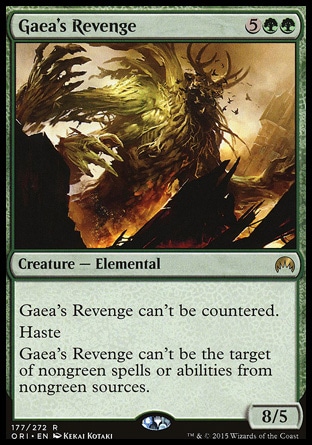
Gaea’s Revenge cannot be targeted by Stolen Identity, because the latter isn’t a green spell.
If the initial target of the spell is still legal and the spell isn’t countered or removed from the stack, upon resolution the most curious part starts: we start following the instructions in the spell’s rules text in the order they are printed. First of all, we put a token on the battlefield under our control that is a copy of the targeted artifact or creature. Then, if the spell is represented by a physical card, we may use the effect that is generated by the Cipher first ability. If we resolve a copy, we won’t get Cipher at all. Fair play.
Phyrexian Metamoph will tell you more about copying artifacts and creatures. He does know it all. For the adult readers there is a more serious article called The Attack of Clones or Copying.
Cipher
702.99a Cipher appears on some instants and sorceries. It represents two abilities. The first is a spell ability that functions while the spell with cipher is on the stack. The second is a static ability that functions while the card with cipher is in the exile zone. “Cipher” means “If this spell is represented by a card, you may exile this card encoded on a creature you control” and “As long as this card is encoded on that creature, that creature has ‘Whenever this creature deals combat damage to a player, you may copy the encoded card and you may cast the copy without paying its mana cost.’”
So, the Cipher’s first ability is a spell ability. Not every player knows such abilities exist. These abilities are followed as instructions during resolution of an instant or sorcery spell. This means that encoding is done only during the resolution of the spell with Cipher and only after we apply the spell’s main effect (the one that precedes Cipher in the card’s text).
Cipher only functions if the spell with Cipher is on the stack and only if it is represented by a card. This means that a card with Cipher cannot be exiled from the hand and become encoded on a creature, because the ability doesn’t function when the card is in the hand.
Copies of the spell with Cipher do not follow the rules of this ability as they are not represented by cards.
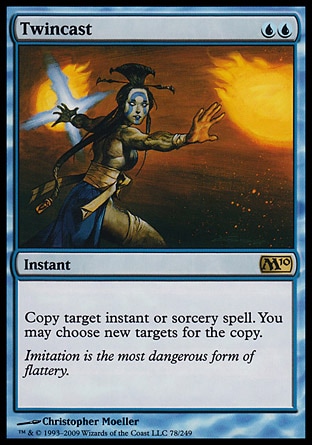
If we use Twincast to copy Stolen Identity, the copy naturally will have Cipher, but it won’t function, because the spell is not represented by the card. The same is true for the copies created by the Cipher second ability.
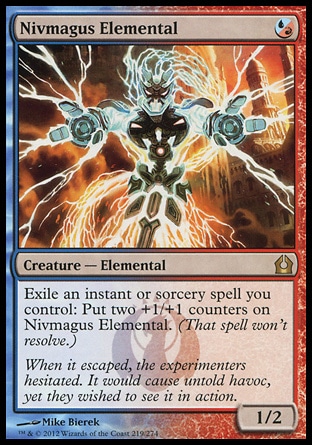
If you exiled Stolen Identity from the stack to activate Nivmagus Elemental’s ability, you won’t get to encode anything as it went to exile before resolution.
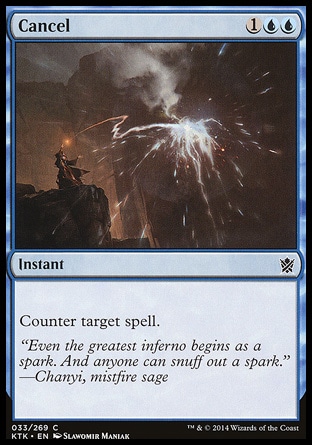
If a cunning opponent countered Stolen Identity, it goes straight to the graveyard. None of its effects is applied, including Cipher.
Also, if the Stolen Identity’s target becomes illegal before the spell resolves, the spell fizzles.
The effect of the Cipher first ability allows exiling the card from the stack and encoding it on a creature under the control of the caster.
- The effect doesn’t prescribe the caster to do that but allows doing so. The word “may” is the clue here. If, for any reason, the caster doesn’t want to encode, he or she may choose not to do so. In such case the spell goes to the graveyard as the last part of the resolution and nothing else happens.
- If the caster chooses to use Cipher, the spell is exiled from the stack; it doesn’t make even a short appearance in the owner’s graveyard.
- Mind that the Cipher ability itself is not targeted. Creature under the control of the caster may be chosen even if they have Shroud or Protection.
- No player has priority during resolution of the spell, so nobody can prevent us from encoding a creature.
- A player may only encode on a creature he or she controls.
- Although the players put the Cipher card (like Oblivion Ring) under a creature it is encoded on, the card itself is face-up in exile zone and can be affected by whatever effect that care about cards in exile.
As the encoding is applied after the main effect of Stolen Identity, at this point the player already has a token it makes. So, if that token is a creature, the player may choose to encode on this spell on that creature.
The Cipher second ability is static. It only functions while the Cipher card is encoded on a creature.
702.99b The term “encoded” describes the relationship between the card with cipher while in the exile zone and the creature chosen when the spell represented by that card resolves.
The card stays encoded on a creature in two cases:
- the Cipher card remains exiled;
- the object (that was a creature during the resolution of the Cipher card) it is encoded on remains on the battlefield.
702.99c The card with cipher remains encoded on the chosen creature as long as the card with cipher remains exiled and the creature remains on the battlefield. The card remains encoded on that object even if it changes controller or stops being a creature, as long as it remains on the battlefield.
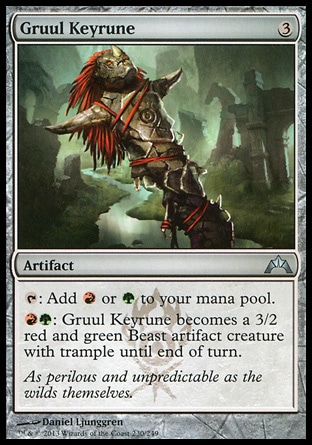
A spell with Cipher may only be encoded on a Gruul Keyrune if it was a creature when encoding took place. Even if the animating effect fades the card is still encoded on the Keyrune.
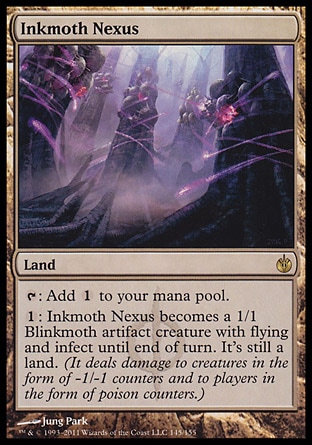
If you encoded a card with Cipher on an animated Inkmoth Nexus, it will stay encoded on Nexus even after the animating effect fades.
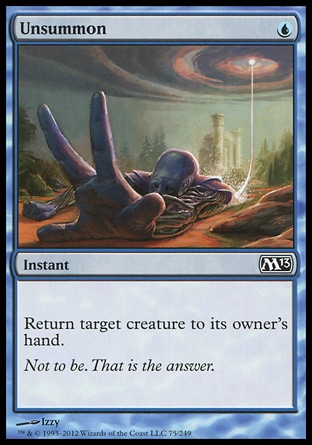
If the creature leaves the battlefield, encoding fades. Exiled card with Cipher stays in exile.
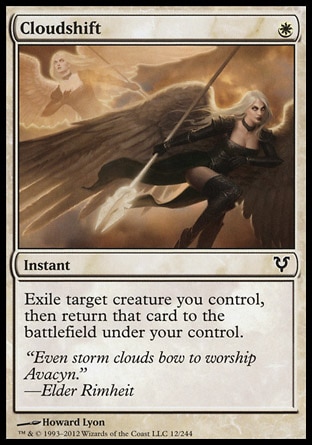
On resolution of Cloudshift the creature is returned to the battlefield. Although it is represented by the same card, it becomes a different game object. Encoding fades.
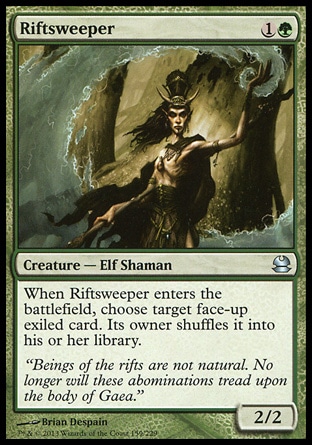
If the encrypted card leaves exile, it stops being encoded even if the creature is still on the battlefield.
The encoded card provides the creature a triggered ability:
“Whenever this creature deals combat damage to a player, you may copy the encoded card and you may cast the copy without paying its mana cost.” |
The triggering event of this ability is combat damage dealt by the creature to a player. Combat damage is only the damage dealt by an attacking or blocking creature during the turn-based action of dealing damage during the combat damage step.
Damage dealt on resolution of triggered abilities is noncombat, even if the triggering event for those abilities is declaring the creature as an attacker or a blocker.
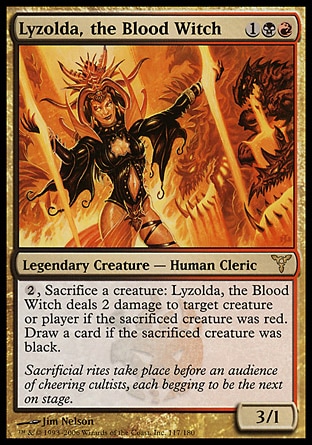
Damage dealt on resolution of activated abilities is also noncombat, regardless of whether the source of the damage is an attacking or blocking creature or the ability is activated during the combat damage step.
The Cipher ability triggers from combat damage even if the damage didn’t cause any visual change.

The effect of Fortune Thief’s static ability doesn’t prevent damage. It prevents its controller’s life to be less than 1. So, even if the defending player had 1 life before damage and didn’t change after, the Cipher ability would trigger.
If the defending player controls Melira and is attacked by a creature with Infect (from Tainted Strike e.g.), he or she will neither lose life nor receive poison counters, but the combat damage triggered ability will trigger.
Combat damage may be redirected from both attacking and defending creatures to any player or players. In case with Cipher the ability will trigger once for each player that received the combat damage from an encoded creature.
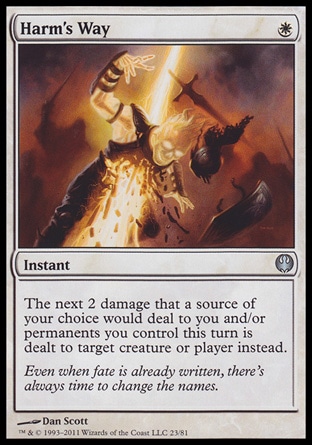
For example, if Stolen Identity is encoded on a 4/4 creature you attack with, but the cunning opponent casts Harm’s Way targeting you and choosing this creature as a source of damage, you and your opponent will both get 2 combat damage and the ability will trigger twice. You will control both triggers.
Note that in a 2HG game the combat damage cannot be split between the heads to get 2 triggers.
810.7f As the combat damage step begins, the active team announces how each attacking creature will assign its combat damage. If an attacking creature would assign combat damage to the defending team, the active team chooses only one of the defending players for that creature to assign its combat damage to. Then the defending team announces how each blocking creature will assign its combat damage. See rule 510.1.
After performing the SBA all triggered abilities that triggered by this moment, including the trigger from the encoded creature that dealt combat damage, are put on the stack in APNAP order. On resolution of each trigger, the player controlling the trigger will be able to copy an exiled card with Cipher and will be able to cast the copy.
The casting of the copy follows the ordinary rules with the only exceptions: the copy of the Cipher card is created and cast from exile, the casting takes place during the resolution of the trigger i.e. no player has priority.
You cast the copy without paying its mana cost, so if the cunning opponent controls an untapped Trinisphere, you’ll have to pay an additional {3}.

Unfortunately, Lion’s Eye Diamond can’t help you out here! Its ability cannot be activated if you do not have priority.
“Without paying its mana cost” is an alternative cost. It doesn’t allow you to skip paying the mandatory additional costs and it doesn’t forbid you to pay for any optional ones (such as Kicker).
Time for Fun!
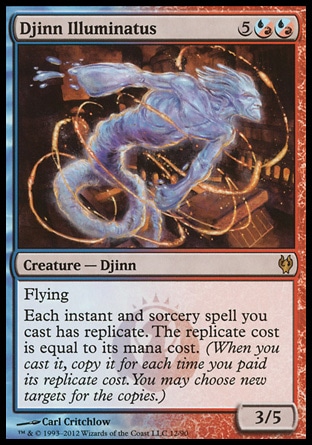
If you control Djinn Illuminatus, each sorcery spell (including the copies of the Cipher spell) has Replicate. This means that we can multiply the copies, not for free though.
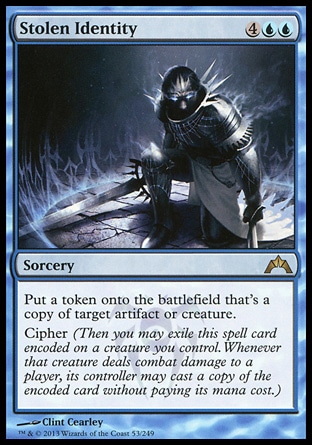
If you cast Stolen Identity with Replicate from Djinn Illuminatus and get an additional copy of the spell, you’ll be able to encode the original spell, but not the copies as they are not represented by cards.
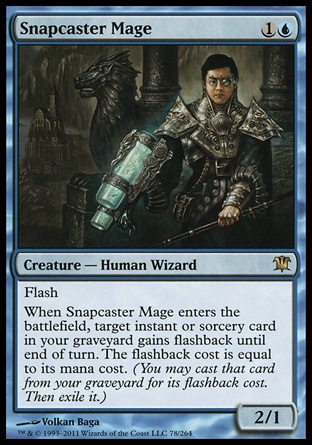
If Stolen Identity is in your graveyard and gains Flashback from the Snapcaster Mage’s trigger, you’ll be able to encode it even if you cast it from your graveyard. It is possible because Flashback doesn’t care about cards that go to exile on their own. It only cares about the cards that try to get to any other zone from the stack.
If you still have doubts that you can cast a sorcery this way, think about the reason why a sorcery card has Cipher at all. If it doesn’t help, try remember about Cascade, Suspend and Miracle.
Casting a copy from Cipher will cause triggering of Extort abilities from the permanents under your control.
A copy of a Cipher card is cast, so it will be counted for Storm.

If Chalice of the Void has enough charge counters on it, its ability will trigger from casting the copies.
The cast copy on the stack is no different from any other spell. It may be countered, exiled from the stack and bounced. The spell effect only takes place on successful resolution.
I draw your attention to the fact that you may copy the card, you may also choose not to. You may then cast the copy or may choose not to cast it. The trigger effect doesn’t force you to do either. If you decide not to cast a copy or you can’t cast it (e.g. no legal targets) the copy will cease to exist the next time SBA are performed. You won’t be able to cast it later.
Finally, I’d like to remind you of the layers system. Don’t be scared, it’s easy! The thing is that a card with Cipher grants the creature it is encoded on a triggered ability. The word “has” indicates it. So, if you encounter an effect that says that the creature loses all abilities, all you need is to find out which effect is more recent. That one will “win”. If the creature loses this triggered ability and then deals combat damage to a player, ability won’t trigger (err.. what ability? there’s none). However, the exiled card stays encoded on a creature.
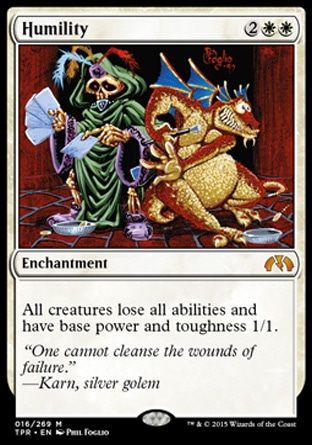
If there is Humility on the battlefield and you encode Stolen Identity on a creature you control, it will have the triggered ability.
If an encoded creature is affected by Turn to Frog, it won’t have any triggered abilities (which means — no copies!).
Translated by Lev Kotlyar

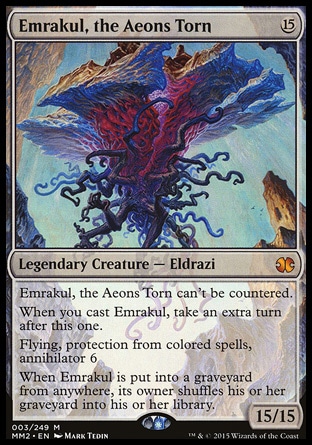
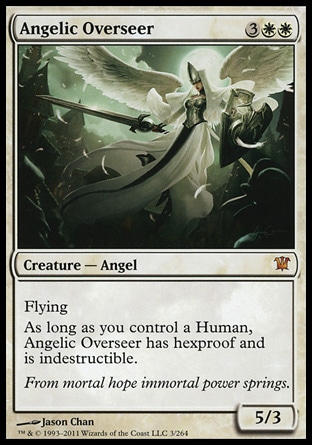
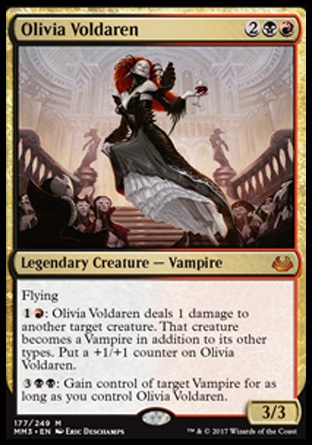
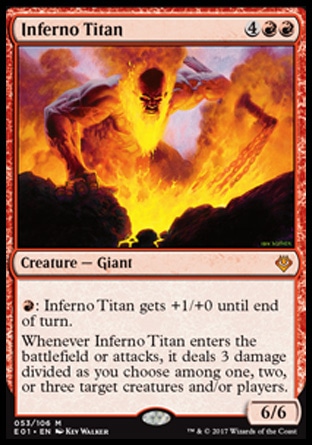
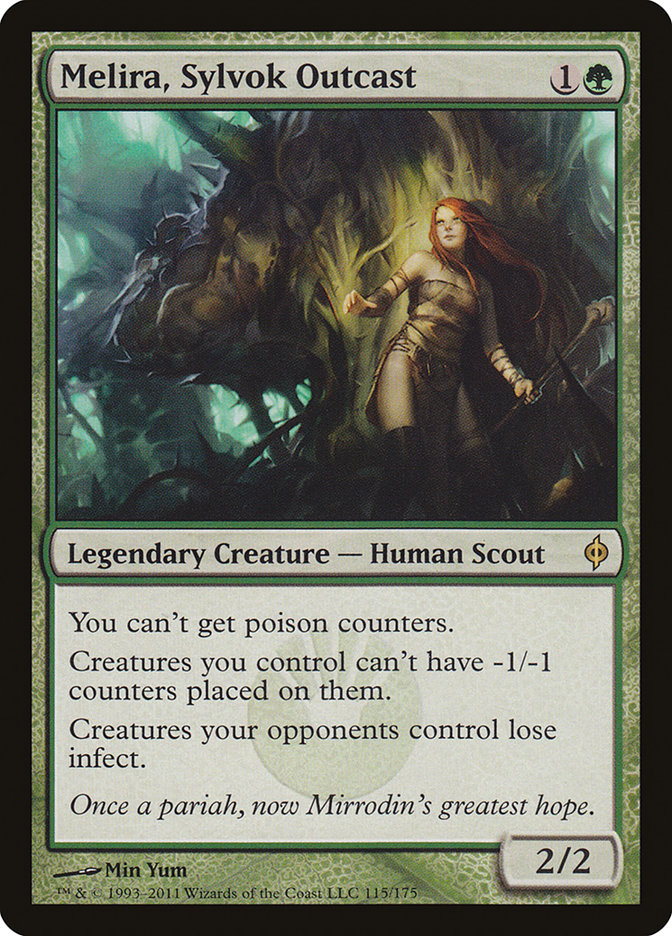
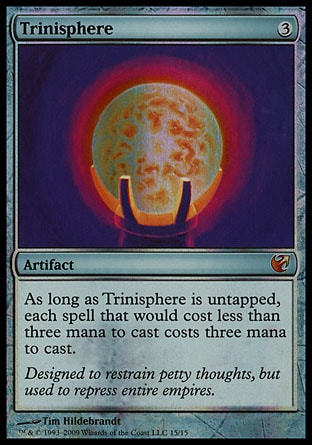
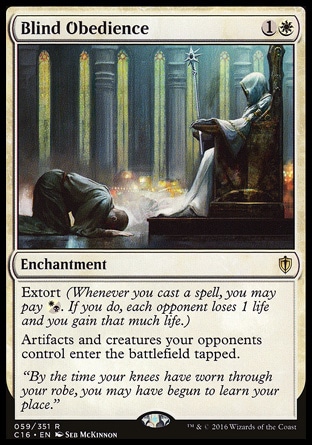
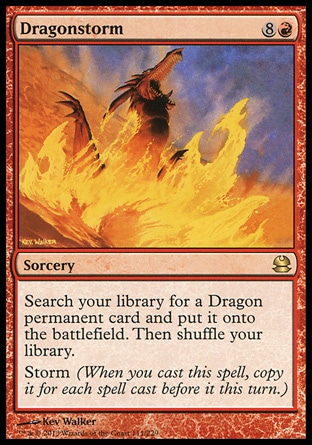
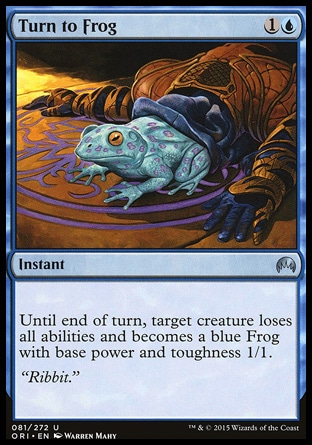
Oracle Text:
Sorcery
Create a token that’s a copy of target artifact or creature.
Cipher (Then you may exile this spell card encoded on a creature you control. Whenever that creature deals combat damage to a player, its controller may cast a copy of the encoded card without paying its mana cost.)